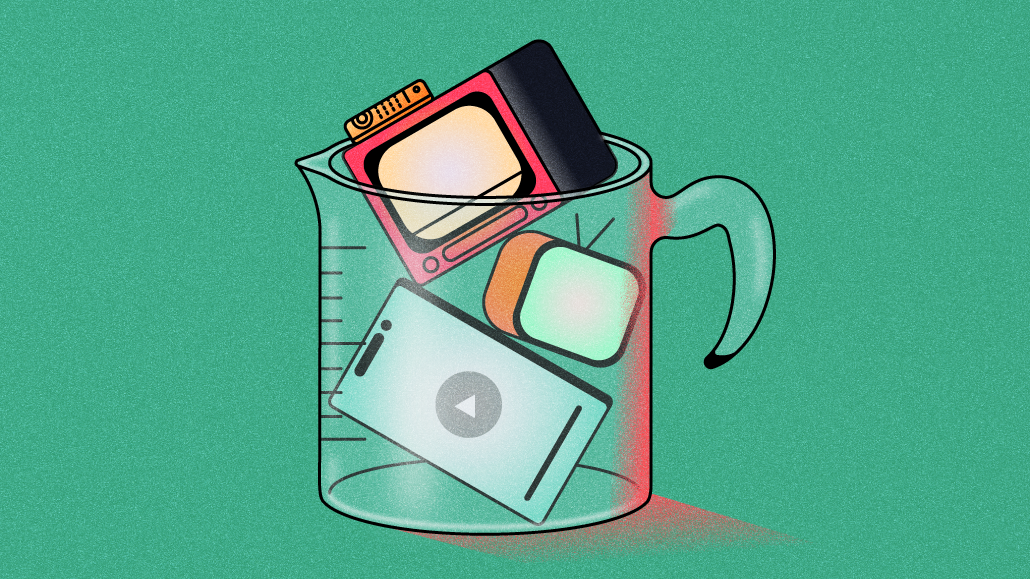
Ad tech faces some existential threats as the foundational tools used to mix and match audiences face extinction.
However, having conquered the desktop and mobile internet, some ad tech companies are simultaneously finding new lifeblood in the guise of connected TV advertising, a sector of the ad industry that’s tipped to grow 22.4% this year, topping $30 billion in spend, according to eMarketer.
Attendees at last week’s CTV Connect conference, hosted in New York City, debated some of the burning issues of the day, primarily how best to leapfrog the teething problems that ad tech experienced on desktop and mobile.
Here, the frustrations over frequency capping tempered the otherwise exuberant mood on stage, albeit this still doesn’t prevent the vast majority (87% of CTV ad spend) from happening through programmatic transactions.
When DSPs can’t do their job
According to statistics cited by eMarketer, 30% of marketers and publishers believe more efficient frequency capping would increase their CTV advertising spend, with Carolina Portela, vp and director of strategic investment at MAGNA, acknowledging how the opportunities of the medium are accompanied by challenges.
“We have challenges when it comes to managing at a holistic level,” she said, speaking on a conference panel entitled, “Stop the Repetition! Getting to the bottom of high ad frequency.”
“We’d definitely like to get more mechanisms for that,” Portela continued. “We’re never going to be in a perfect, holistic management world, but we’re putting a lot of thought into it.”
The duality of the challenge/opportunity that CTV poses for advertisers was made clear in a presentation by Chris Kane, CEO and founder of Jounce Media, who explained some of the intricacies of “biddable ad opportunities” to attendees.
Biddable ad opportunities are arguably the biggest departure from legacy TV, whereby ad inventory deals are primarily agreed upon on an upfront model. Theoretically, this means buyers can be reasonably sure of brand safety, plus the conventional TV sector has more consensus on ad targeting and measurement.
However, as programmatic buying merges with the world of TV, advertisers are sometimes exposed to the precarious nature of open-market media trading, where supply chain complexities create a vector for bad practice.
Jounce Media’s Kane told CTV Connect attendees that CTV advertising has theoretical benefits, including centralized access to “rights holders” and “unified frequency control.”
However, right holders, such as legacy TV networks, often don’t provide an adequate amount of data signals, making frequency capping difficult and often resulting in a negative viewer experience.
“When these companies run auctions through the RTB channel, they don’t disclose very much; some use aliases to represent their inventory in the bid stream,” added Kane.
He further explained how this makes it difficult, for advertisers’ demand-side platforms often don’t know precisely what they are bidding on.
As a result, the much-touted benefits of CTV, such as household addressability and unified reach (not to mention frequency control), simply aren’t on offer. But conference speakers did offer some solutions.
“I certainly have had the experience where you see a CTV ad pod, and you see the same ad over and over again,” said Kane. “But I don’t think you have to accept a trade-off; there are some thoughtful ways that you can buy to prevent against that.”
Kane said buyers can use measurement tools to assess when their frequency caps have been surpassed, adding they should negotiate with rights holders accordingly. ”I really don’t think you have to accept those violations,” he said.
AI + IDs = better CTV?
According to multiple CTV Connect presenters, if streaming rights holders (be they legacy TV networks or comparatively new streaming service providers) don’t pass adequate signals through the programmatic supply chain, then it is better to go directly to the source.
“DSPs and [supply-side platforms] SSPs can justify a 15% take-rate when they’re providing something of value,” explained Kane. “But they really can’t justify that whenever they’re just ordering systems.”
Meanwhile, fellow conference panelist Jennifer Hess, vp of global ad operations at Fubo, explained how her outfit was investigating the use of AI-powered video recognition technology to manage ad frequency across linear and CTV better.
“That’s the thing I’m most excited about,” she said, adding that identity signals such as The Trade Desk-led UID2 further help with frequency capping. “I think it’s potentially a game-changer.”
More in Media

From sidelines to spotlight: Esports events are putting creators center stage
Esports events’ embrace of content creators reflects advertisers’ changing priorities across both gaming and the wider culture. In the past, marketers viewed esports as one of the best ways to reach gamers. In 2025, brands are instead prioritizing creators in their outreach to audiences across demographics and interest areas, including gaming.

Condé Nast and Hearst strike Amazon AI licensing deals for Rufus
Condé Nast and Hearst have joined the New York Times in signing a licensing deal with Amazon for its AI-powered shopping assistant Rufus.

Media Briefing: AI payouts may be entering a new era
AI compensation is evolving — and new models, not just publisher demands, are driving the shift beyond flat-fee licensing.









